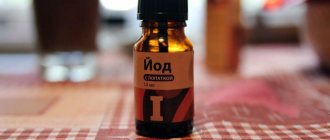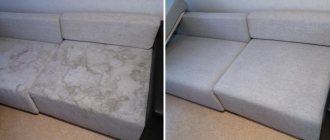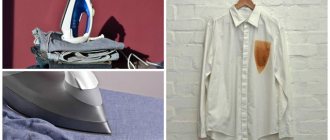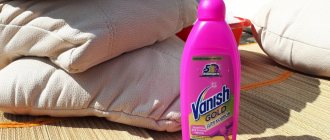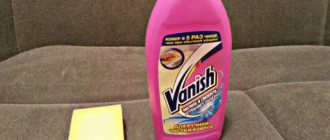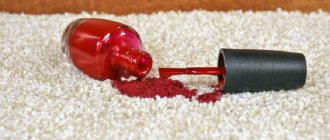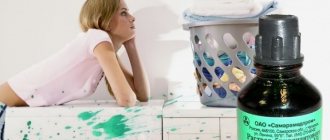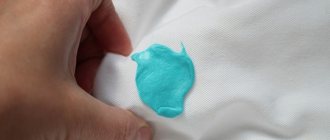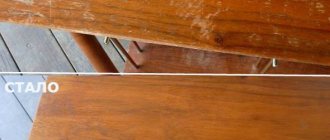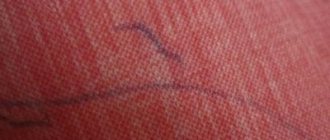In a house where there is a child or several children, there are always toys, books, paints, and, of course, plasticine, from which children love to make various crafts. Despite the fact that there are special boards for modeling, children often drop plasticine on carpets or furniture.
How to clean plasticine from carpets and furniture?
If pieces fall, they can be easily collected, but if someone has already stepped on the plasticine or accidentally sat down, then the question immediately arises: how to clean plasticine from carpets and furniture?
Before you begin removing plasticine from the carpet, you need to remove everything that can be done by hand, but you must make sure that the plasticine is not smeared on the carpet surface.
Common methods for removing plasticine from a carpet surface
- If there is a stain left on the carpet, you need to cover it with a napkin and iron it with an iron heated to medium temperature.
- If you don't have an iron at hand, you can use a hair dryer as an alternative. When heated, the plasticine will melt and be absorbed into the napkin material.
- To remove the remaining stain, you can use gasoline, ammonia or acetone, which you can use to moisten a sponge or cloth and wipe the dirty area.
- To clean carpet from plasticine, you can use an ice pack, which must be placed on the contaminated area and left for a while. After hardening, the plasticine can be removed by removing it from the carpet surface piece by piece. This type of work requires time and painstaking work.
- To clean carpets from plasticine, you can use solvents, such as white spirit. The stain must be thoroughly treated with a sponge soaked in solvent and left for several minutes. Then we repeat the procedure, wiping the surface from the edge to the center. At the end of the procedure, you need to take a clean rag and remove any remaining dirt on the carpet.
- You can remove the top layer of plasticine from the carpet using a knife or nail file. After this, you need to treat the contaminated area with a solution previously prepared from laundry soap, and then carefully walk over the contaminated area using a damp cloth.
- Specialized products designed for car interior care have a good cleaning effect.
- Cleaning is carried out by applying a small amount of this product to a plasticine stain. Then we leave the carpet for several hours.
- During this time, the plasticine will have time to turn into a liquid state, after which it must be removed with a damp cloth.
Article on the topic: What is loft furniture
Glass hydrophobia
https://iloveremont.ru/wp-content/uploads/2019/11/ispolzuem-gubki-dlya-udaleniya-razvodov-e1512338961282-590×421.jpg"; alt=”Sponges for removing stains” width=590 height=421 We use special sponges for removing stains Excessively hard tap water can become the enemy of glass furniture. Removing her stains is not easy. Here are the basic tips that will help in this difficult matter:
For fresh stains, use special “magic eraser” sponges; special soap pads made of steel wool have worked well.
IMPORTANT! Forget about hard brushes and abrasive pastes - they leave scratches
Baking Soda Superpower
https://iloveremont.ru/wp-content/uploads/2019/11/pishchevaya-soda-dlya-udaleniya-pyaten-e1512338219299-590×422.jpg"; alt=”Baking soda” width=590 height=422 Baking soda for removing stains For heavily neglected surfaces covered with old hard water stains, first treat with vinegar, leave for half an hour, then rub with baking soda and remove any remaining dirt. As a radical remedy, use a paste of vinegar and soda.
The tooth fairy is resting
https://iloveremont.ru/wp-content/uploads/2019/11/ispolzuem-zubnuyu-pastu-dlya-ustraneniya-pyaten-e1512338091799-590×414.jpg"; alt=”Use toothpaste” width=590 height=414 Use toothpaste to remove stains on furniture Regular toothpaste will replace a too aggressive mixture of soda and vinegar:
- rub it with a damp towel over the surface of the stain;
- wait ten minutes;
- rinse with a water solution of vinegar.
Lemons in vinegar is a theme
Acetic acid and lemon juice are an excellent cleaning agent that does not leave streaks on glass furniture. Pour the mixture, slightly heated for half a minute, into a container with a spray bottle. Apply it to the glass and wait three minutes. Wipe with a lint-free non-woven cloth. https://iloveremont.ru/wp-content/uploads/2019/11/nanosim-limonnuyu-i-uksusnuyu-kislotu-e1512387689466-590×369.jpg"; alt=”Apply citric and acetic acid” width=590 height=369 Apply citric and acetic acid from a spray bottle NOTE! Ammonia can be added to any glass cleaner to enhance its properties.
The Kings Last Argument
https://iloveremont.ru/wp-content/uploads/2019/11/kisloty-primenyaem-s-bolshoj-ostorozhnostyu-e1512338546829-590×404.jpg"; alt=”Acid is a last resort” width=590 height=404 We use acids with great care If the methods described above did not help, the following will help your glass coffee table achieve enlightenment:
- sulfamic acid – soluble in water, does not require special disposal methods;
- hydrochloric acid – used in a concentration of no more than 15%;
IMPORTANT! If unprotected, these products cause severe skin burns and damage to the upper respiratory tract.
Careless use can damage your furniture. We hope that our tips for fighting stains will help you out in difficult times.
But if they don’t help, use the services of a cleaning company that specializes in professional cleaning of furniture and premises. https://iloveremont.ru/wp-content/uploads/2019/11/professionalnaya-chistka-mebeli-590×590.jpg"; alt=”Professional cleaning of furniture” width=590 height=590 Professional cleaning of furniture with special means https://iloveremont.ru/wp-content/uploads/2019/11/obnovlenie-staroj-polirovki-na-kresle-590×393. jpg"; alt=”Renewing the old polish on the chair” width=590 height=393 Renewing the old polish and removing dirt on the chair
We hope that our tips for dealing with stains will help you out in difficult times. But if they don’t help, use the services of a cleaning company that specializes in professional cleaning of furniture and premises. https://iloveremont.ru/wp-content/uploads/2019/11/professionalnaya-chistka-mebeli-590×590.jpg"; alt=”Professional cleaning of furniture” width=590 height=590 Professional cleaning of furniture with special means https://iloveremont.ru/wp-content/uploads/2019/11/obnovlenie-staroj-polirovki-na-kresle-590×393. jpg"; alt=”Renewing the old polish on the chair” width=590 height=393 Renewing the old polish and removing dirt on the chair
Methods for cleaning furniture from plasticine
Accidentally crushed plasticine that gets onto the upholstery of upholstered furniture can ruin not only your mood, but also expensive furniture. There is no need to panic about this; there are effective ways to eliminate this problem that have proven their worth in practice.
- If a stain has formed on the upholstery of upholstered furniture as a result of plasticine, it is necessary to perform the following procedure: carefully iron the stain with a hot iron, after covering it with a rag or paper folded several times.
- Instead of an iron, you can use the cold method of removing plasticine using ice cubes, which must be placed in a bag and applied to the area contaminated with plasticine. After some time, when the plasticine has hardened well, it is necessary to carefully remove the plasticine using a scraper, the blunt side of a knife or the side of a spoon. This should be done without much effort so as not to damage the upholstery material.
- To clean delicate upholstery, it is better to use dishwashing detergent.
- Since plasticine contains fats and paraffin, after its removal a dirty stain remains on the surface. To remove it, you need to take soap and lather the contaminated area well, then use a brush to thoroughly rinse off the remaining detergent (soap).
- Soap can be replaced with a detergent that does not contain aggressive substances, which must be thoroughly rinsed off completely.
- If, when cleaning furniture from plasticine with warm water and soap, it was not possible to achieve the desired result, then baking soda can come to the rescue. A thick paste prepared from baking soda and water should be applied to the stain and left for a few minutes, then rinsed with warm water.
How to remove plasticine from cabinet furniture?
Plasticine can get on the surfaces of cabinet furniture. Removing it is quite simple - just grab it and scrape it off. But a stain remains on the furniture, which can be washed off with a cloth or sponge dipped in soda solution or soapy water.
Article on the topic: What is wicker furniture called?
Such simple procedures will help clean carpets, upholstered and cabinet furniture from accidentally fallen plasticine.
Mechanical methods
These are rather crude methods, the essence of which is basic scraping. Cases when a stain can simply be scraped off are rare. Most often, additional means are used - soap, chemicals, water.
You can use the following algorithm:
- In a small bowl, dilute a couple of tablespoons of shaved laundry soap in warm water.
- Add two pinches of baking soda to this mixture.
- Use a dish sponge to moisten and clean any remaining plasticine remaining after mechanical cleaning.
- Remove soap stains with a clean sponge and water.
Abrasive compounds
Abrasive compounds are in some ways reminiscent of mechanical ones, but in a more gentle version. Salt, crushed nut shells, and fine river sand work well.
Salt is the most gentle remedy; it is suitable for lightly stained fabrics and fabrics with minimal lint. Sprinkle plasticine marks on the upholstery with slightly moistened salt and wipe off the stain with a cloth.
You can take sea salt, since its particles are much larger and it is more convenient than food salt.
For more persistent plasticine stains, nutshells . Walnut shells are ground in a coffee grinder and sprinkled on the upholstery. A rag is soaked in water, squeezed out and the dirt is wiped off. Remaining stains can be cleaned with any cleaning solution.
Stubborn stains can be removed with fine river sand . This method will not work for fabrics with high pile, as this rather rough method can damage it. The breeding algorithm is the same as with the shell.
Useful tips on how to remove plasticine
Plasticine is a wonderful material for children's creativity.
It develops fine motor skills and promotes mental development, but sticking to various surfaces becomes a problem. The plastic pieces contain wax, paraffin, dyes and fats. It’s not difficult to get rid of a colored stain; the main problem is a greasy stain that will make mom work hard.
In this article we will tell you how and with what you can remove plasticine from wallpaper, carpet, table, skin and hair, and toys.
Thermal effect on the material
Sometimes it is very difficult to get rid of plasticine smeared on the coating by freezing. In this case, it is more advisable to use paper napkins and an iron . For those who do not know how to remove plasticine from a carpet, you should use the following scheme:
- Turn the rug face down. Place a napkin under the dirt, folding it in layers. The underside of the plasticine stain should also be covered with a paper napkin.
- Start the iron and wait until it warms up.
- Then the heating device should be applied to the napkin from the wrong side of the product for ten seconds. Avoid melting the product due to heat. As a result of heating, the plasticine will acquire a liquid consistency and will remain on the paper napkin.
- It is unlikely that the contamination will be removed immediately, so the procedure is repeated several times.
The greasy stain left behind by the material can be removed with ordinary soapy water.
How to remove a fresh stain?
Before the plasticine has time to melt and penetrate deep into the surface structure, it must be removed. The primary task is to get rid of the colored cake in any way possible. It can be heated to gently peel it off using paper, or frozen.
The next stage is to eliminate the greasy trace from the plastic mass. Here you can use any product from the housewife’s arsenal:
- soda;
- ammonia;
- laundry soap;
- dishwashing liquid;
- stain remover
You need to choose a method for cleaning the surface taking into account the material from which the item is made.
Preventing stains
Restrictions and prohibitions on a child’s activities are not a method of education. A properly organized workplace is a guarantee of quick cleaning without consequences.
Equip the place for modeling with a comfortable table with a child's chair to eliminate the desire of your “Michelangelo” to move to the usual sofa.
With the advent of non-fat-based plasticine, the procedure for cleaning upholstered furniture has become simpler. Although, knowing the rules and methods of cleaning, you can deal with any stain, even from ordinary plasticine.
Interesting experiments on cleaning plasticine in the video:
Larisa, June 30, 2022.
Subscribe to the channel Modern Housekeeping in Yandex.Zen
Save and share information on social networks:
Discussions are closed for this page
Temperature effect
Modeling mass has an interesting physical property - it changes structure under the influence of temperature.
In the cold, plasticine loses its plasticity and becomes hard. Its melting point is low, so when it comes into contact with hands, heating devices and warm air, it practically “floats”. This property can be used by the hostess. First method (cold):
- Place the product in the freezer.
- Wait until the mixture hardens (no more than 20 minutes).
- Tear off the cake using tweezers.
It is not recommended to separate the plasticine with your hands; it may melt again. If the surface is large, for example, a carpet, you can use ice cubes for freezing.
Second method (hot):
- Spread the product on a flat surface.
- Cover the stain with a thick sheet of paper.
- Iron with a heated iron until the mass sticks to the sheet.
Article on the topic: How to assemble an Atlanta sofa with a lot of furniture
Both methods involve subsequent washing to remove the greasy mark from the plasticine cake and treating the affected area with special products.
Proven methods for clothing
It is very easy to wash plasticine at home; to do this, you can try one of the methods described below. Do not throw trousers or tulle into the wash without first cleaning it; the stain will not be completely removed. A greasy mark will remain in place of the plasticine.
Freezing and heating
You can remove plasticine from clothes using low temperatures. When exposed to cold, the material hardens and separates well from the fabric. To do this, you can put the item in the freezer for 10-30 minutes.
After the plasticine hardens, it becomes very brittle and easily separates from the fabric. A thick layer is more difficult to clean, since only the surface area can be crumbled and scraped off; the lower part of the stain will remain on the clothes. In this case, you can try re-freezing the contaminated clothing.
Advice! If the size of the freezer does not allow you to place the product there, then you can use a dry ice pack, which is in every refrigerator.
High temperatures are just as effective as low temperatures. To do this, you need to lay the item out on an ironing board and place a layer of paper towel on the plasticine stain. The heated iron is pressed against the napkin. As a result of this procedure, the molten material is absorbed into the paper, but for complete cleansing it is necessary to do this manipulation 3 to 5 times.
It is necessary to indicate that the heating method is only suitable for things made of heat-resistant material, for example:
- Jeans,
- Cotton,
- Linen.
This method is dangerous for silk, wool and polyester. In this case, the temperature of the iron should not exceed the permitted temperature range for this fabric material.
Use of improvised means
After excess plasticine has been removed, greasy stains often remain on the fabric. There are several available tools that will help you quickly and efficiently wash these stains.
Folk recipes
If plasticine gets on the surface, you need to act quickly. If you don’t have special tools at hand, you can use the improvised ones that can be found in every home .
Laundry soap
An effective method to solve the problem on textile surfaces. It is necessary to use soap with a fatty acid content of 72%.
Algorithm of actions:
- soak the soiled item for 15 minutes in warm water;
- treat the area with plasticine with laundry soap;
- leave for 30 minutes;
- clean off the plastic mass with a brush;
- wash the product as usual.
Ammonia
You can fight pigment residues and greasy stains with ammonia.
Step-by-step instruction:
- Prepare a solution of 200 ml of water and 10 drops of ammonia.
- Soak a cotton swab in the liquid.
- Treat the contaminated area.
- Rinse the product in cool water.
The method is not suitable for delicate fabrics.
Sunflower oil
A component that the housewife always has at hand. The product can be used on plastic and rubber surfaces.
Instructions for use on fabrics:
- soak the swab in oil;
- process the plasticine cake with it;
- rub the dirt with your hands so that the sticky mass rolls off;
- Carefully remove the pellets.
The main disadvantage of the method is the need to remove the greasy stain after treatment.
The effect of sunflower oil on stuck plasticine - in the video:
General recommendations
When using any chemical, you must follow basic safety rules - protect your respiratory system with a respirator, and the skin of your hands with clothing, long sleeves and thick gloves. Otherwise, there is a risk of irritation or burns. It is recommended to further protect the mucous membrane of the eyes by wearing glasses.
When treating the ceiling or upper parts of walls, it is worth protecting your hair and scalp by wearing a hat. Before using a finished chemical, be sure to study the instructions and treat only those surfaces for which they are intended.
Industrial products
Household chemicals that will help cope with the problem can be divided into 4 groups:
- Bleaches, stain removers, washing liquids - work well on textile surfaces.
- Solvents with an aggressive composition are used in extreme cases.
- Car care products – effective on large plastic areas.
- Cooling agents are universal “saviors”.
When choosing household chemicals, you should avoid aggressive components, since their areas of application are often children's clothing and toys. Popular with housewives:
Article on the topic: What is the service life of a milling cutter for furniture production?
Vanish Oxi Action Stain Remover
Liquid concentrate for different types of fabrics does not contain chlorine and copes with all types of stains , including old ones. Removes pigment residues and greasy stains after contact of fabric with plasticine. Price for 1 liter – 400 rubles. Read reviews here, here and here.
Freezing spray for chewing gum Axel-9 Anti-gum
Fights the sticky mass of chewing gum and plasticine on any surface. Just spray it and remove the dirt. Must be stored out of the reach of children. The price for a 0.3 l cylinder is 700 rubles.
Frau Schmidt universal liquid soap
The product, without phosphates and chlorine, is designed to remove stubborn stains from textile surfaces. Does not cause allergic reactions. Price for 500 ml 300 rubles. Read reviews here.
Features of cleaning various surfaces
Each material requires an individual approach to combat adhering mass. Sometimes, to achieve a goal, you have to use more than one recipe, but combine several.
Fabric and clothing
To remove plasticine from a textile surface, you can use the physical properties of the creative material, that is, heat or freeze. An alternative option is to use a budget method proven by housewives:
- Grind a piece of laundry soap on a grater.
- Add hydrogen peroxide to the shavings until a paste forms.
- Apply the product to the contaminated area.
- Clean the plasticine with a toothbrush.
- Wash the item.
The method is suitable for cleaning clothes, upholstery and tablecloths. Before processing curtains and drapes, they must be removed.
The cake can be scraped off from flat and hard surfaces (shelves, tables, armrests, cabinets) . You need to act carefully so as not to damage the top layer, otherwise the next step will be removing scratches from the furniture.
Carpet
It is very difficult to scrape off a stuck cake from the pile surface; most likely, the plasticine will remain in place, and the size of the stain will increase.
Article on the topic: What kind of wood is furniture made from in Vietnam?
If the method turns out to be effective, a cloth soaked in purified kerosene will help .
It’s easier to take advantage of the physical properties of the colored mass - freeze it with an ice cube or melt it with a hairdryer and transfer it to a thick sheet of paper. Any greasy stain left on the carpet can be removed using dishwashing liquid (such as Fairy). The method is suitable for cleaning fabric upholstery.
How to remove plasticine from a carpet, read this article.
The algorithm of actions resembles the process of removing colored cakes from fabric . But there are subtleties. If the walls are covered with paper wallpaper, you cannot use ammonia, soda or kerosene. This will completely ruin the appearance of the coating.
It is also difficult to remove plasticine from embossed wallpaper. To do this, use a thin needle, then wash the surface with a brush dipped in a soap solution.
You can try to peel off the sticky mass with the same material. A small piece will help remove plasticine from the wallpaper. This publication will tell you more about removing plasticine from wallpaper.
Plastic
Plastic also reacts to temperature changes. In the cold it becomes brittle, and contact with heat causes it to melt. A safe way to remove sticky stuff from plastic toys or PVC furniture:
- apply vegetable oil to a cloth;
- treat the problem area;
- remove excess fat with soap solution;
- Wipe the surface with a cloth soaked in clean water.
The product is not suitable for cleaning soft toys. Freezing and washing will help textiles.
Tips for cleaning toys from plasticine - in the video:
Hair
It is not worth experimenting on hair with aggressive components.
After the procedure, you should thoroughly wash your hair several times to get rid of stickiness and oily shine.
The sculptor’s hands are the first to suffer during sculpting. To put them in order, it is necessary to assess the scale of the problem:
light contamination can be removed by washing with warm water and baby soap;- a strong soap-scrub with a natural composition will help remove;
- the plasticine under the nails will disappear after a fifteen-minute bath with soapy water.
If no method gives 100% results, you need to use oil. Any will do: baby for the body, sunflower, olive, and so on. A simple and pleasant way for a child to get rid of multi-colored marks is to take a bath.
Article on the topic: How to furniture for 3 star hotels
Tips for removing plasticine stains
There are a number of useful recommendations that will make the process of removing plasticine from clothing, soft and hard surfaces easier. Let's list the main ones:
- You cannot remove modeling material from fabrics with your fingers, rinse with water, or wipe with napkins. Due to such actions, the sticky mass will only penetrate deeper into the fibers.
- Do not use sharp objects to scrape plasticine.
- Before using chemicals, it is recommended to test their effect on an inconspicuous area of the product. If the texture of the material changes, you will have to use another, more gentle cleaning method.
- You should only work with aggressive chemicals with the windows open and wearing gloves.
Note: If your child is interested not only in modeling, but also in drawing, then recommendations for removing gouache from things will come in handy. And with older children - on removing pen ink from school clothes.
And finally. In order not to be upset by the unpleasant consequences of children's creativity, it is better to initially accustom the child to carefully work with plasticine. And if traces of the sticky mass are still found on clothes, furniture, floors or walls, putting things in order using the described methods will be as easy as shelling pears.
photo 2: depositphotos.com/banprik
Tips for parents
You can avoid problems with plasticine sticking if you use some simple tips:
- Set aside a special place for creativity.
- Provide your baby with clothes that you don’t mind getting dirty.
- Do not leave the child alone while sculpting.
- After playing, remove materials and instruments to a specially designated storage area.
There is an option for “lazy” parents - buying plasticine in plastic containers. It does not leave stains, does not stick to surfaces and dries with prolonged contact with air. It has disadvantages - a short period of use and the price is much higher.
How to wipe off plasticine?
join the discussion
Share with your friends
- How to remove from a hard surface?
- Removal from textiles
- Removing grease stains
- How to clean wallpaper?
- Cleaning different textures
If there are children in the house, or you yourself are interested in creative processes in the form of plasticine modeling, it is quite possible that you have had to deal with such a problem as removing contaminants obtained from this material. The difficulty of removing plasticine, of course, is not comparable to trying to remove a red wine stain from a white sofa, however, you will have to tinker with it, especially considering the area and localization of the “plasticine” violation of cleanliness and order.
Features of modeling from plasticine
Plasticine is an elastic and soft mass that is designed specifically for modeling. It is made from filtered clay powder with the addition of wax, paraffin, fat and other ingredients that prevent it from drying out. Plasticine is very easy to remove from leather, but when removing from carpet pile or fabric materials, some difficulties may arise. In addition, the substance can leave behind greasy stains of different shades, which are very difficult to remove. Such contamination has a detrimental effect on the appearance of the coating and often requires its replacement.
Modeling with pieces of plasticine is a hobby for many children, which promotes the development of creative abilities. In addition, modeling from plasticine improves hand motor skills, which has a beneficial effect on attention, concentration, thinking, dexterity, motor coordination, visual memory and imagination. Despite the many advantages of this type of activity, many mothers avoid buying plasticine for their children, citing the difficulty of removing the remaining mass from clothes, carpets and other things on which it gets on.
How to remove from a hard surface?
Of course, the best option is when you get by with little damage and all you need is to simply wash the plasticine off the wood, glass or plastic. For example, if a table, toys or special children's boards for modeling were smeared with it. This process will not take much time and effort. So, to erase plasticine from toys or boards, it will be enough to take hot water into a wide container and place the contaminated objects there for a few minutes. The material will quickly melt, and you can easily scrape off its remains with a plastic knife or an alternative that you have on hand, for example, an old plastic discount card. Afterwards, it is enough to wipe the item with a clean cloth soaked in a soap solution or a mixture of ammonia and hydrogen peroxide (in a ratio of 1 to 1).
Article on the topic: Sonoma oak furniture what wallpaper
With the table, the actions are practically repeated. Prepare a warm soapy solution, wet the stained area and carefully remove it with a sponge and scraper. Do not scratch wood or glass surfaces. If the plasticine does not come off the table immediately, try heating the defect with a hairdryer, this will make it more manageable and you can again use a sponge with soapy water.
How to clean a barbecue grate
When you cook barbecue while on a picnic, then after that you will need to wash the grill. There are a number of home recipes to solve this problem:
- Coca Cola. Place the grate in this drink, and after 10 minutes all the fat will come off.
- Liquid soap. Lubricate the grill generously with this soap, wrap it with plastic wrap and do not touch it until the morning. In the morning you can clean it without any problems.
- Hot water. If you are dealing with fresh grease deposits on the grate, you can soak it in hot water. After doing this, wait 15 minutes, and then scrub it with a hard washcloth and rinse with clean water.
Removal from textiles
It’s still not difficult to remove wax and other components of plasticine from plastic and wood, but what to do if the clothes are damaged? First, remove the top layer with a plastic knife or any other similar object. Then you can use two contrasting but effective methods: cooling or heating. The first will reduce the sticky properties of plasticine, and it will be better separated from the fibers of the fabric. Options for freezing things:
- Packed in plastic, put in the freezer;
- apply ice cubes to the stain;
- Apply a special cooling spray.
After this procedure, the plasticine stain will harden and can be cleaned off with a plastic knife or a stiff brush.
When you don't want to freeze your hands, turn on the iron. If the plasticine components froze using ice, the heating device will melt them. This method will help solve the problem on thick fabrics, such as jeans or trousers. To do this, you need to take several paper napkins and place one under the stained area, and the second above the fabric.
Without turning on the steam effect, you need to iron the napkin a couple of times, as a result of which the plasticine will remain on it.
Primary treatment of soiled items
If you need to clean clothes from large pieces of plasticine, the freezing method will help. At sub-zero temperatures, the sticky substance will freeze and easily come off the fabric. To do this, put the clothes in a plastic bag and leave them in the freezer for 1-1.5 hours. Then carefully scrape off the hard grains with a plastic spatula, the back of a knife, or a wooden skewer.
If the plasticine has become deeply embedded in the fibers of the fabric, you need to use an iron. The task is this:
- The soiled item is turned inside out.
- Place paper napkins or toilet paper folded in 2-3 layers under and on top of the stain. The sheet of paper should be larger than the area of the iron sole.
- The iron is heated to 50 degrees and its sole is pressed against the clothing for 10–20 seconds.
- The manipulations are repeated several times, replacing used napkins with clean ones.
The procedure is completed when the stain is no longer imprinted on the paper.
Second thermal option: blow drying . In terms of efficiency, it is slightly inferior to cleaning with an iron and is used only to remove small dirt.
However, removing the bulk of the plasticine from clothes is not enough to completely put it in order. You will also have to wash off the grease and colored stains remaining from the sticky mass.
Removing grease stains
Unfortunately, having removed a significant part of the sticky material, it will still leave a stain in the form of particles of dye and grease that have ingrained themselves into the fabric. To remove it later, you can use laundry soap, ammonia, vegetable oil or dishwashing detergent.
It is recommended to grate a third of a regular piece of laundry soap. Then fill these soap shavings with water until a thick foam forms, where you should place the damaged item, and rub the stain with soap. Half an hour later, the problem area should be treated with a brush and the item should be washed as usual. The method is effective for all types of materials, but you should be more careful with delicate things - it is better not to use the brush too vigorously.
Related article: Why wooden furniture creaks at night
If there is ammonia , you can safely use it. To do this, you need to dissolve 10 drops of the substance in 200 ml of water. A small stain should be treated with this solution using a cotton pad, and then the clothes should be washed completely. A heavily soiled item can be soaked for half an hour. The composition of the solution is the same, just increase the volumes according to the outgoing proportions.
And finally, one of the simplest and most effective methods for removing greasy stains from plasticine on clothes. The good thing is that dishwashing liquid with vegetable oil is almost always available at home. Here it is enough to wet a cotton pad with oil and rub the problem area with it for several minutes.
This will dissolve the fats, then treat the mark with a product and leave the item for an hour. Subsequent washing will completely remove the stain.
Soap solution and solvents
Many housewives, in search of information on how to dissolve plasticine, use gasoline and acetone. These substances must be used very carefully and carefully , because even a minor mistake can completely ruin the carpet.
Before removing plasticine from the carpet using a solvent, it is better to send the child outside or to another room, because inhaling toxic fumes can harm him.
Before removing plasticine from the carpet, in the room where the carpet or rug will be cleaned, it is imperative to open the window completely. It is also worth taking out all heating devices and sources of flame. After following all precautions, you can begin the procedure:
- Apply acetone or gasoline to the contaminated area using a foam sponge and wait three minutes for the solvent to be thoroughly absorbed into the coating structure.
- After some time, the plasticine can be removed using a dry cloth.
- The treated area should be soaked in soapy water and wiped with a damp sponge. After the product has completely dried, there will be no traces of dirt on its surface.
To remove greasy stains remaining after the procedure, you can use a concentrated soap solution heated to 40 degrees. The composition should be applied to the surface for half an hour, then wiped with a damp cloth. If these actions do not lead to a positive result, then it is better not to risk it and use dry cleaning services. In this case, professionals will return the carpet to its former cleanliness and freshness.
How to clean wallpaper?
However, it’s not just objects and clothes that can get dirty—children know a lot about this. If plasticine ends up on the wallpaper and you don’t consider it as a conceptual wall decoration, arm yourself with a few items to get rid of the stain as quickly as possible. If smooth fabrics are damaged, be sure to prepare the following:
- scraper;
- hair dryer;
- dry napkin;
- sponge and detergent.
First, try to carefully remove the top layer of plasticine using a scraper. There is no need to smear it, just scrape it off. After removing the top part of the dirt, connect the hair dryer. Use it to warm up the stain and then blot it with a napkin. You can repeat these steps several times in a row. In the case of wallpaper, a greasy stain may also remain after contamination with plasticine, so you need to use a sponge, first soaking it in a soap solution. Do not pour water on the stain or soak the sponge thickly. It is enough to moisten, squeeze and rub the stained area.
After this, it remains to dry the treated area with a hairdryer.
How to properly disassemble a computer mouse
It is best to clean the mouse from dirt if it is collapsible.
In this case, perform the following sequential actions:
- disconnect the mouse from the computer;
- The socket and wire are cleaned with a cotton swab soaked in alcohol;
- then prepare a special mat on which the mouse will be disassembled;
- turn the device upside down and use a Phillips screwdriver to unscrew the deepest screw;
- the body is separated into two parts;
- remove the chip, ball or laser sensor;
- take a scraper and clean off old dirt;
- Use soft damp cloths to wipe away any remaining dirt;
- All parts are thoroughly dried;
- at the last stage all that remains is to assemble the structure.
Cleaning different textures
Embossed wallpaper damaged by plasticine will require additional plasticine, no matter how strange it may sound. Nothing scary, it just needs to be white and used like an absorbent. To do this, you need to apply white plasticine on top of the stuck one and try to sharply tear it away from the wallpaper. You should not knead it too much; the material should not melt. It is better to repeat the procedure several times.
Article on the topic: Where to paint furniture in Volgograd
Then do the same steps as in the case of smooth ones. We heat the problem area with a hairdryer, then try to get rid of any remaining dirt using a napkin.
A trace in the form of a greasy stain will help to wipe off with a sponge dipped in a pre-prepared soap solution.
Additional life hacks: if you don’t have a hairdryer at hand, try gently melting the plasticine with a heated iron or a regular damp cloth. And be sure to keep in mind that the dry paper napkin used when removing plasticine should ideally be white, without patterns or marks. Otherwise, you can manage to worsen an already polluted place.
Blue, red, green or any other color - regular plasticine will still be sticky. Don't worry if it sticks where you don't want it. There are simple methods for this that will help solve the problem even at home.
You will learn more about how to wipe off plasticine in the following video.
Dry cleaning or DIY cleaning?
An old greasy stain does not respond well to any type of cleaning done using non-professional household chemicals or folk remedies. The best solution in this case is to order dry cleaning of the sofa at home, during which professional chemicals based on organic solvents will be used.
You can try to do the job yourself, but remember that household stain removers often cause discoloration in the area of the upholstery to which they were applied. They do not contain organic solvents, which are found in professional products, which reduces the overall effectiveness of their impact on pollution.
Another problem is that after using stain removers, wet cleaning of furniture is recommended. During dry cleaning, residual water and chemicals are removed from fabrics using special equipment that is not available to household consumers. If you do not do this, you may encounter the following troubles:
- fungus and mold, because damp fabrics are the best environment for their reproduction;
- the appearance of an unpleasant odor;
- A large amount of dust will settle on the remains of a detergent that has a sticky base, so a stain will form again in this place. Your family members and pets will have to constantly inhale both dust and chemical components.
The use of different cleaning compounds leads to discoloration and stretching of materials, changes in the structure of the pile, which is why the upholstery looks worn out and unkempt.
Let's sum it up
We looked at recommendations on how to clean a greasy stain from a sofa, as well as their pros and cons
The choice of method is yours, but if you don’t want to accidentally damage the furniture through carelessness, then it’s better to seek help from professionals who specialize in dry cleaning. All work will be completed at your home in a few hours!
Do you want to know the cost of dry cleaning at home in Moscow?
Fill out the form and we will contact you within 5 minutes!
How to remove a plasticine stain from a sofa upholstery
How to remove plasticine from a sofa is one task. And a completely different one - how to remove a stain on upholstery. In principle, you can deal with two problems at the same time on your own, without resorting to the services of dry cleaning or cleaning teams.
Thermal processing method
A piece of plasticine that is firmly stuck to the upholstery of the sofa must be exposed to temperature. For example, you can direct a hot stream of air onto it using a hairdryer, or put a clean sheet of paper on top and iron it at maximum setting. As soon as you notice that the substance has begun to melt, its remnants are removed with paper napkins, and the stain is erased.
Article on the topic: How to care for wicker furniture
In order to get rid of a plasticine stain on the sofa, you can prepare a soap solution based on laundry or baby soap. Loose powders and even dishwashing detergent are also suitable. The stain is erased strictly from the edges to the center and not otherwise.
There is a radically opposite method - freezing plasticine. Place an oilcloth or piece of fabric on top of it and cover with ice cubes. Wait until the plasticine freezes and then it can be easily removed to remove the stain.
Household chemicals and traditional methods
Since plasticine contains fat, it must be treated with anti-fat agents.
If you notice a stain on the sofa in time, immediately treat it with a degreasing compound. This includes both dishwashing detergent and special sprays for cleaning stoves, ovens, etc.
As for such products as “White spirit”, alcohol, acetone, gasoline, they, of course, very effectively clean plasticine stains on the sofa, but at the same time they pose a threat to your upholstery. Therefore, before using these compounds, test them on an inconspicuous area of furniture to assess the possible damage. Not all fabrics that can be used to cover furniture will respond positively to such cleaning.
Traditional methods include the use of soda. Prepare a thick paste of baking soda and water and spread it evenly over the entire area of the stain. After 15-20 minutes, rinse with warm water.
Rough surface cleaning
If the stain is old and has managed to penetrate firmly into the upholstery of the sofa, then rough intervention cannot be avoided. To do this you will need a sharp knife or blade, patience and accuracy. Gradually cut off the pieces of plasticine into small pieces. Do not try to remove the substance immediately in one motion. First remove the main part that is not adjacent to the upholstery, and only then start getting rid of the smaller ones. Once the plasticine has been removed as much as possible, clean the area using household chemicals, their solutions and a dish sponge.
What to do: stains on upholstery
Cleanliness is an essential part of a happy home where people enjoy life. With furniture upholstery, this is only one aspect, but an important one.
Think about every time you ate on the couch and dropped food crumbs or spilled drinks that left stains. What can we say about dirty feet, dirty clothes or just daily wear and tear that can leave the upholstery dirty and gray. But all these stains don't have to become a black mark on your home's curb appeal.
The most important thing you need to understand is that upholstery is not the whole furniture, it’s just the fabric, and it’s just the fabric that needs to be cleaned.
If you are unsure, you can always check the manufacturer's information. Then, before you begin cleaning a large stain, we recommend testing the cleaner and cleaning method on a small, inconspicuous area of the upholstery to ensure there is no discoloration or other damage.
In this guide, in addition to basic cleaning tips and techniques, we'll look at the different types of stains you might encounter on your upholstery.
Oil stains
The whole family gets together to watch a movie, and with it comes hot popcorn full of butter on the couch. And while everyone is careful, pieces of popcorn may fall onto the sofa, after which you will find greasy stains on the upholstered furniture.
Against butter, the best option is a dry solvent, which you can find in a grocery or retail store. Apply a little onto a clean white cloth and blot the stain, but do not rub.
Next, mix one tablespoon of a mild, balanced detergent to one cup of warm water. Again, just blot the stain. Next, using another rag or towel, rinse off the solvent/detergent with warm water and allow the upholstery to dry.
Oil stains from cheese
Cheese is another food product that often ends up on upholstery. Again, it's found in all your favorite TV snacks, hence leaving stains on a regular basis.
- Mix one teaspoon of a mild, balanced detergent with one glass of warm water. Using a clean, white towel, blot the cheese stain.
- Finally, blot the stain with clean water to remove any remaining cleaning solution or chlorine.
- Allow the affected area to dry.
Ink stains on upholstery
Coming home from work or school, you throw your shirt on the sofa, the pen in your shirt pocket is leaking, but before you know it, there is a stain on the upholstery. Ballpoint pens, especially blue ones, are common stain makers, and we'll tell you how to deal with stains.
It is important, however, to remain patient and persistent, as ink stains can be stubborn. Just make sure you only blot the ink stains
Friction can cause the ink stain to grow larger.
You have several options, including:
- Spray hairspray onto a clean, white rag and blot the stain, then blot with a clean, dry rag.
- Use a white rag soaked in isopropyl alcohol. Again, blot the ink stain with it and then dry with a towel.
- Again use a clean white towel, but now you can use nail polish remover or acetone. Work the ink stain from the edges to the center.
- Commercial products that work well on ink stains include Carbona or AFTA. For both products, you'll need to use a clean, white towel to wipe down the affected area of the upholstery.
Coffee stains
Sipping coffee on a chair or sofa is a common occurrence. To get rid of a coffee stain, mix one teaspoon of a mild, pH-balanced detergent with one cup of warm water, then blot the inside.
You can also make your own stain blotting mixture by mixing a third cup of white vinegar with two-thirds cup of water. When finished, use a white towel to absorb excess liquid, stain, and cleaner.
Regular cleaning will help keep your upholstery looking attractive and odor-free, which makes all the difference. Generally, you can use a regular vacuum cleaner with an appropriate attachment to keep your furniture clean. Stains on upholstery are not the biggest problem, just remove dust and any contaminants regularly.
At the same time, you can enjoy your favorite sofa or chair without spending your hard-earned money on stains on the upholstery.
